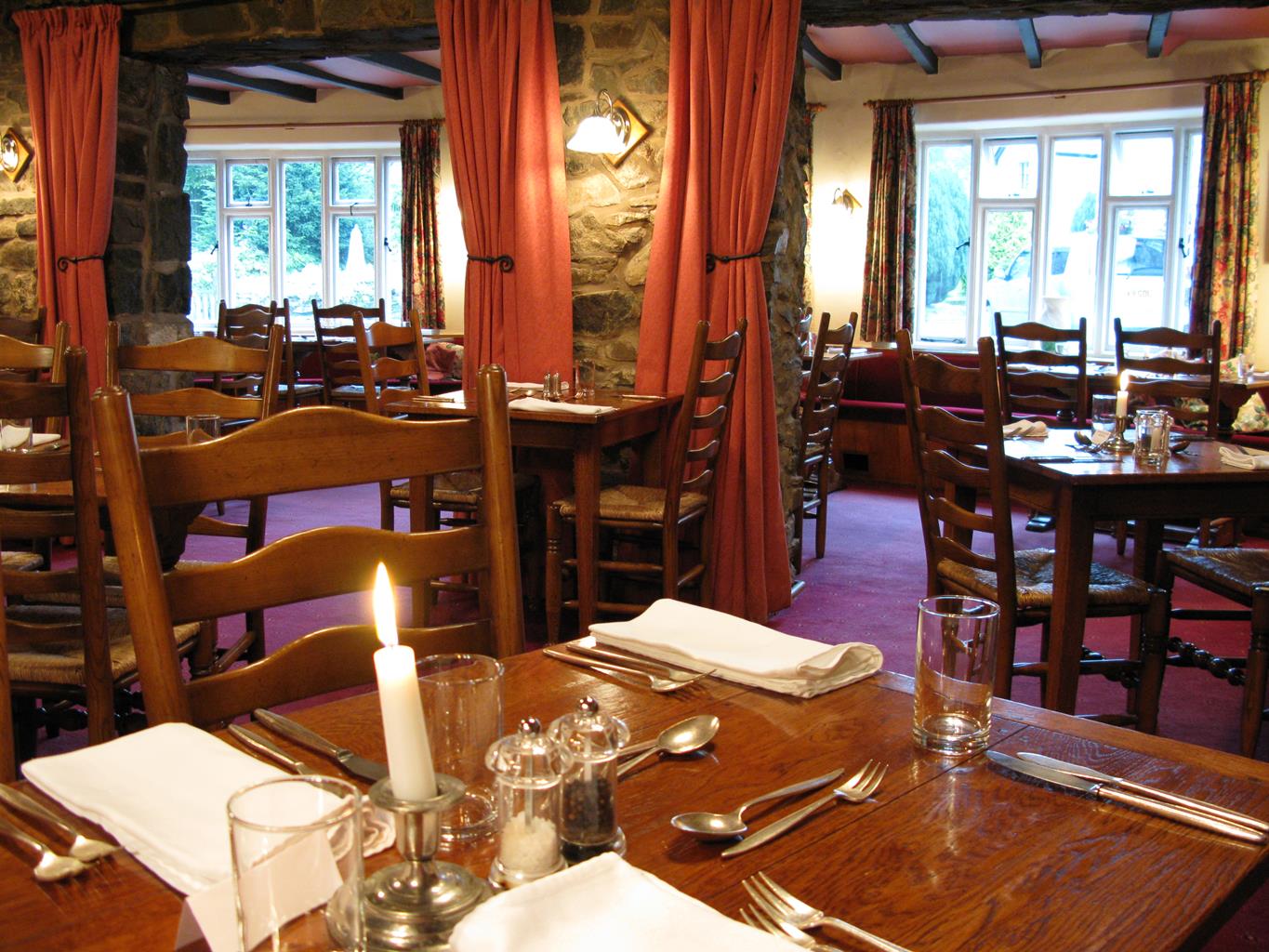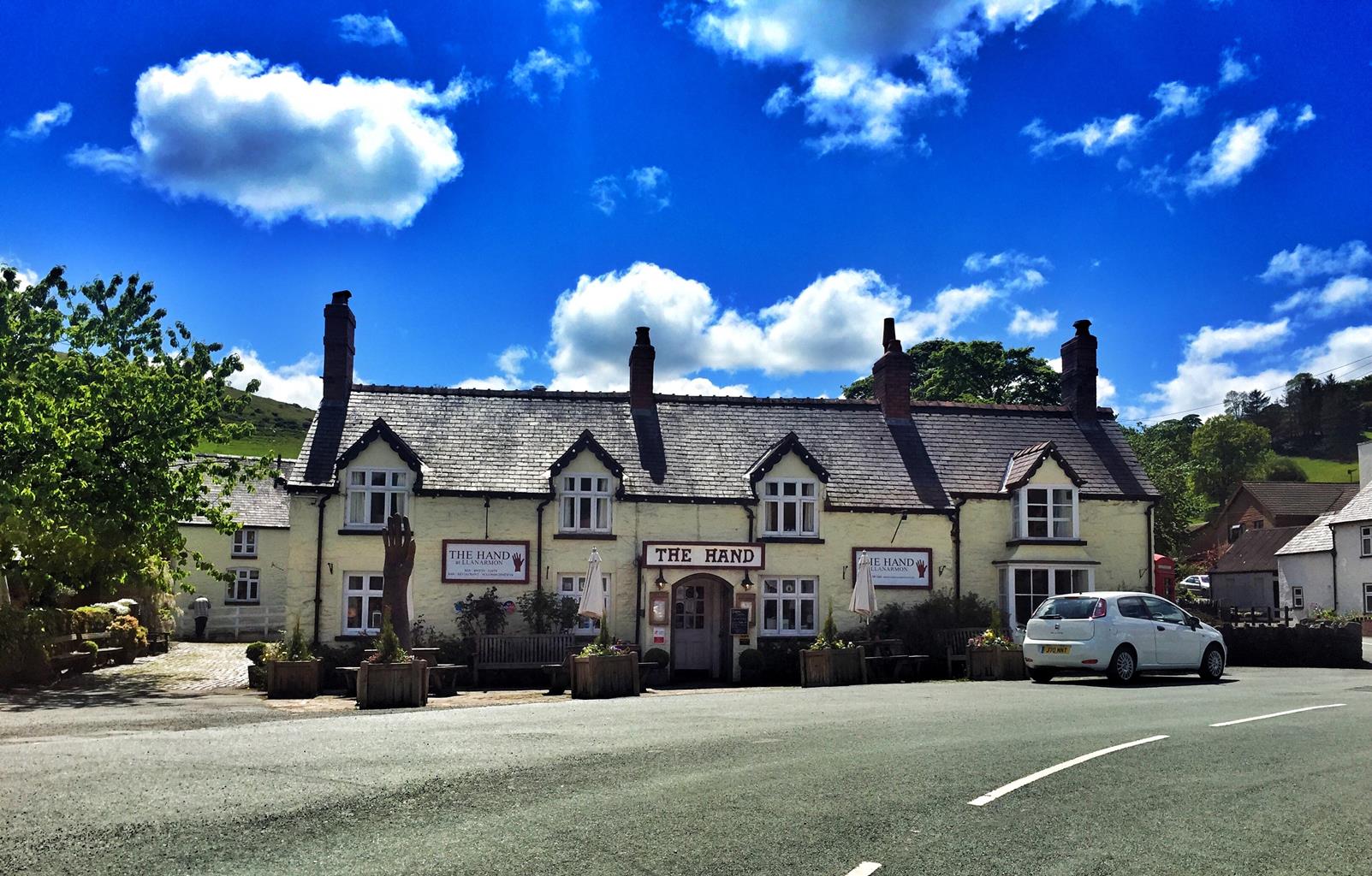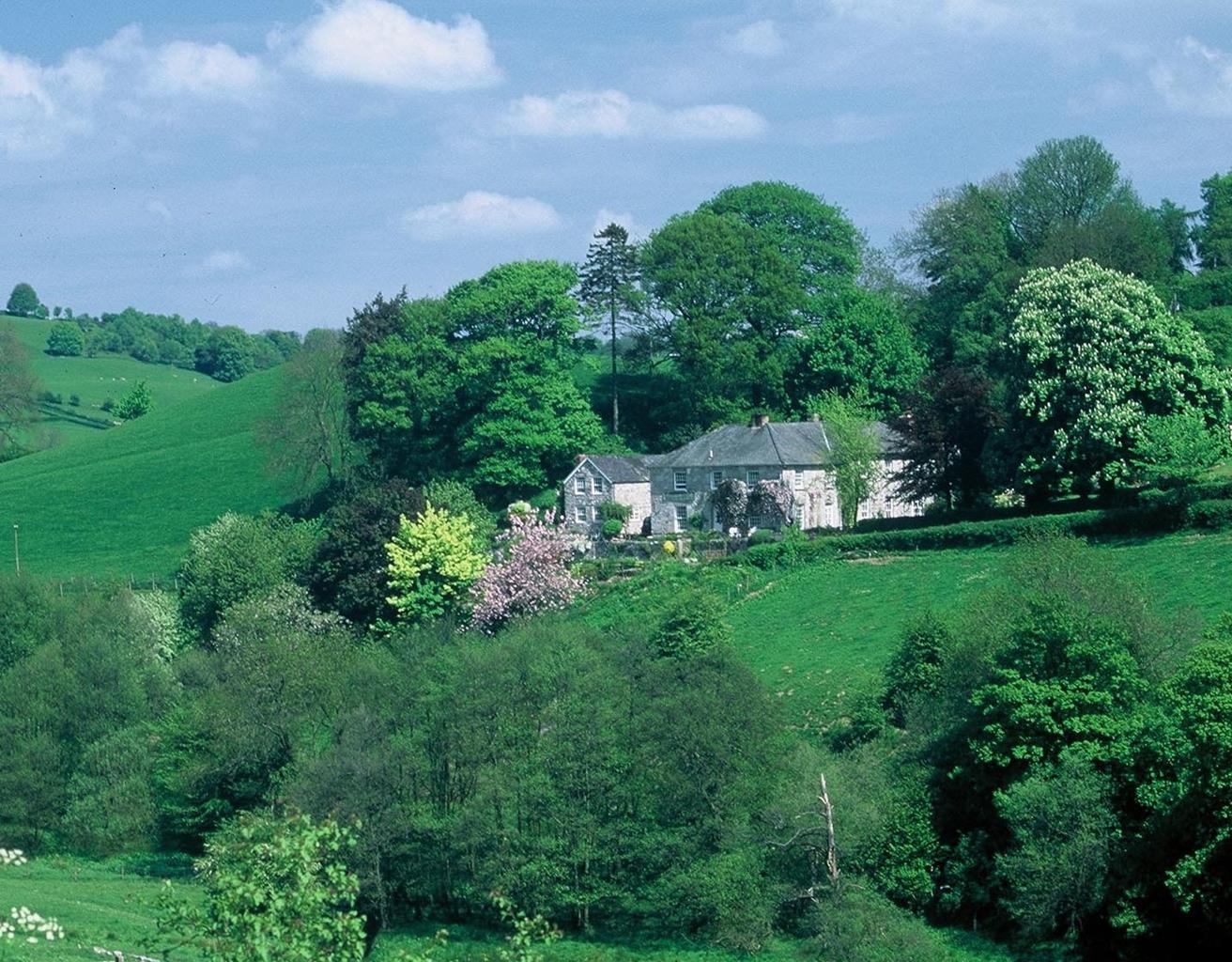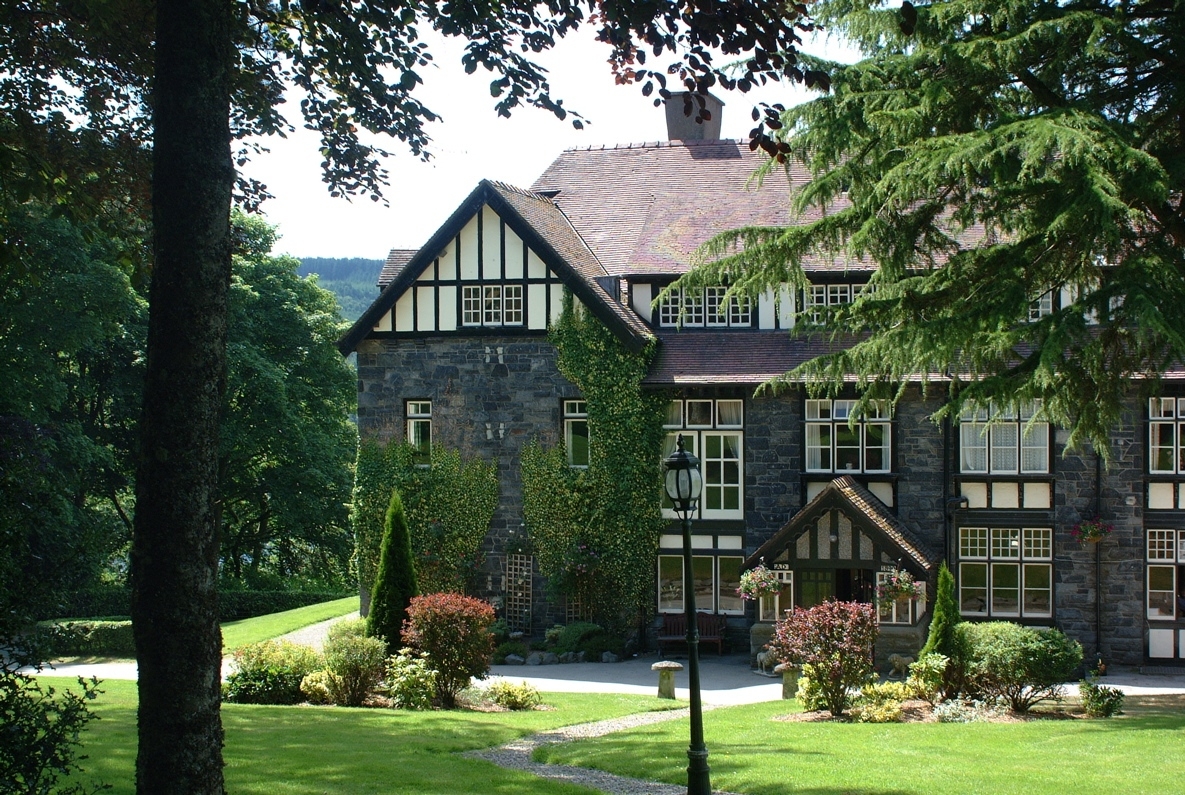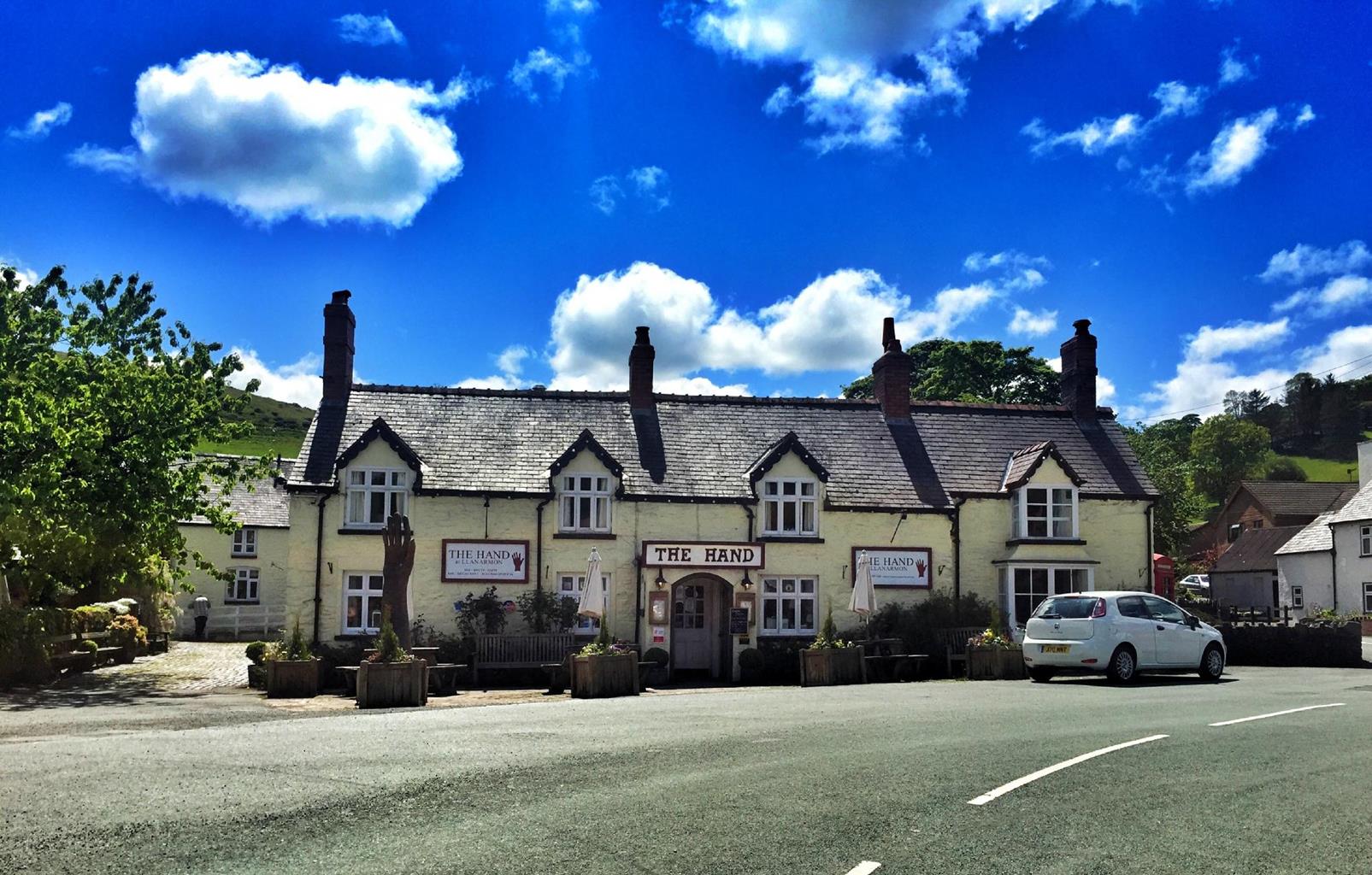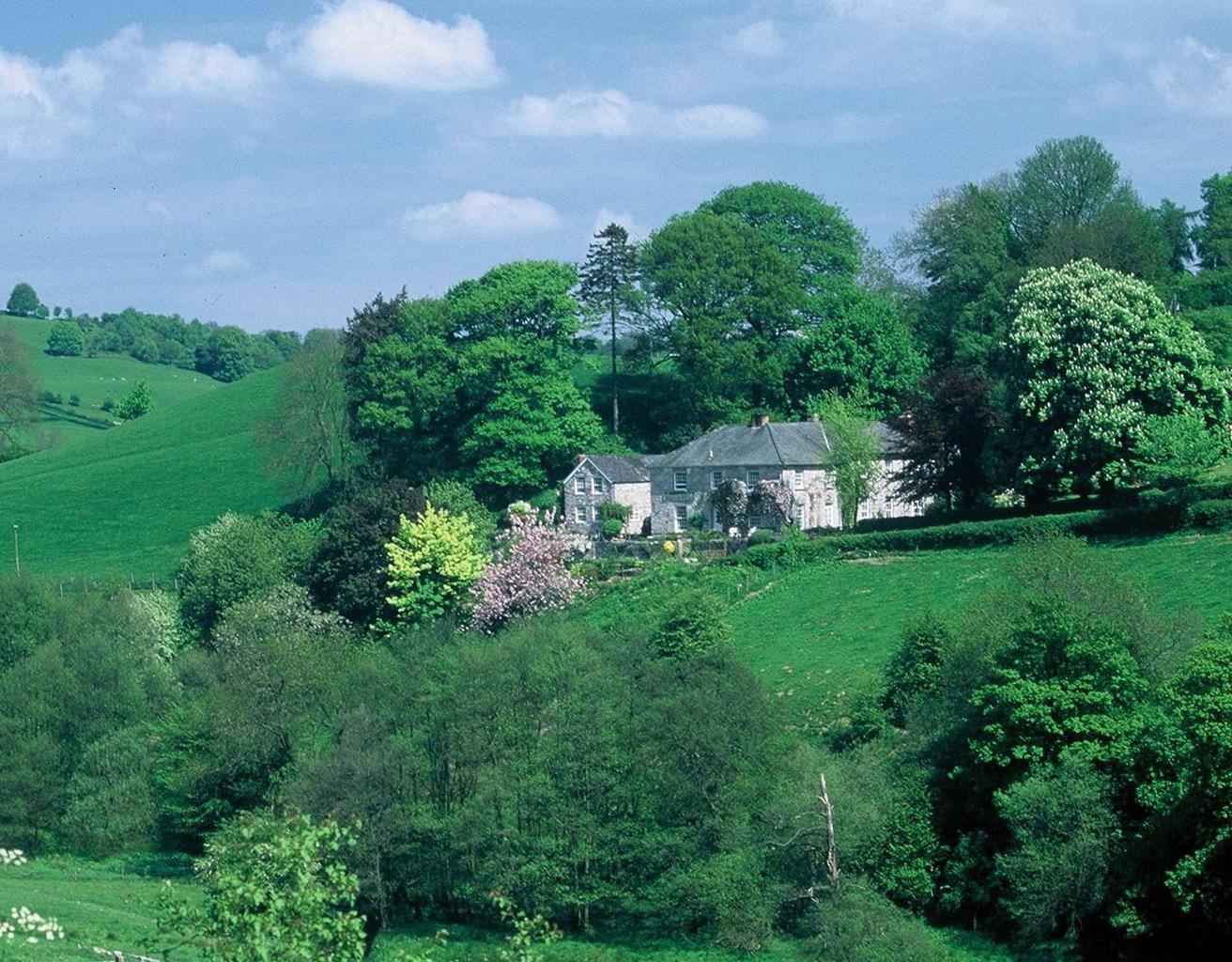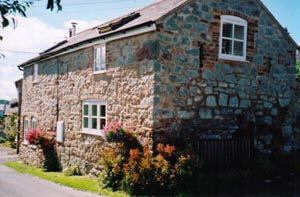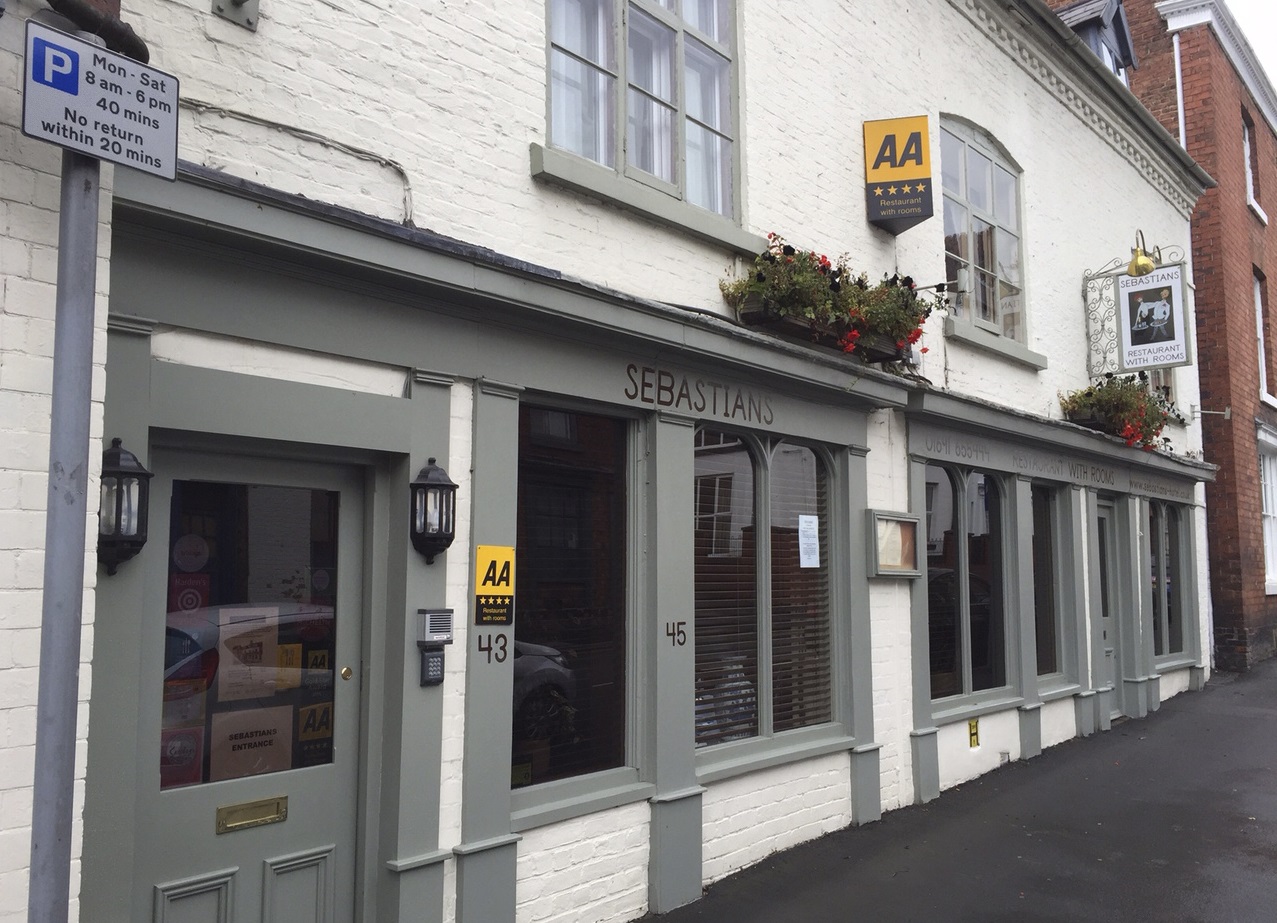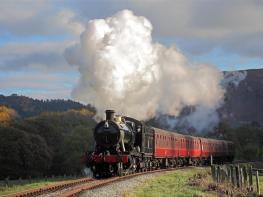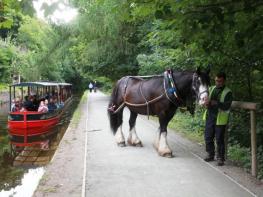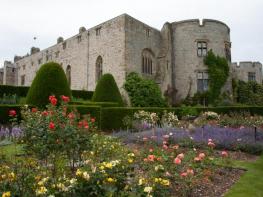Appointed to a high standard, this inn provides a range of thoughtfully furnished bedrooms, with…
From Tregeiriog to Llanarmon

A ramble in the Ceiriog Valley and along old drovers' roads into the surrounding hills
5.75 miles (9.3kms)
About the walk
Numerous visitors have extolled the pastoral landscape of the Ceiriog Valley, including the English travel writer George Borrow and the Liberal prime minister David Lloyd George (in office 1916–22). There is plenty of time to appreciate these, as you wind your way through the meadows and woods between Tregeiriog and Llanarmon. On the north side of the valley, however, is a very different type of landscape, where you will get a taste of the wild heather moors and glimpses of the higher Berwyn peaks. From Llanarmon, the walk follows old drovers’ roads to Rhyd Caledwynt (‘ford of the Caledwynt’) before returning to the hamlet of Tregeiriog in the valley below.
Monks and drovers
The Ceiriog Valley is bypassed today by all main roads, but this wasn’t always the case, with Llanarmon Dyffryn Ceiriog once being an important overnight stop on the drovers’ road to Oswestry and Shrewsbury. For centuries, Welsh drovers would drive herds of cattle and other livestock hundreds of miles across country to profitable markets in large English towns. However, the arrival of the railways in the 1840s and the 1850s sounded the death knell for the droving trade, with the last cattle drive across Wales occurring in 1870.
Drovers were not the only travellers to pass through the Ceiriog Valley. In medieval times, Cistercian monks, on their way to the abbey of Valle Crucis near Llangollen, also came through the valley. The Welsh longhouse Hafod Adams, one of the oldest in the region, is reputed to have been built by a monk, Adam Trevor, connected to the abbey, and served as a resting place for travelling monks. The word hafod means ‘summer dwelling’, and referred originally to a farm in the uplands to which cattle would be moved during the summer months. With growing pressure on land during the 16th and 17th centuries, many such hafodau were converted into permanent farmsteads.
Valley of poets
Although only a few miles from the English border, the Ceiriog Valley has produced a number of notable Welsh poets. The most famous of these is John Ceiriog Hughes (1832–87), commonly referred to by his bardic name ‘Ceiriog’. Ceiriog was born in Penybryn but spent much of his adult life in Manchester. This experience of exile was a major influence on his poetry, which often expresses a deep yearning for the people and landscape of his youth. A number of his poems remain immensely popular, and his simple lyrics on love, patriotism and the natural world have led to comparisons with Robert Burns.
Walk directions
From the crossroads in the centre of Tregeiriog, take the lane signed to Rhiwlas, dropping down the hill to cross the River Ceiriog. Immediately after the bridge, turn right and follow a farm lane as far as a left-hand bend. Keep ahead through a gate into a field, following a sign for the Ceiriog Valley Walk.
Cross the field to a stile and gate into woodland and join a broad path along the lower woodland edge. Emerging onto a slate track above Ty’n-y-fedw farm, keep ahead towards a stile and gate where the track turns uphill to the left.
Continue to another stile on the left a few paces ahead. Bear half right across a field to a stile in a fence, then keep ahead across the next field towards a stone barn. Go through a gate and join a grassy track to the left of the barn.
On meeting a lane, turn right and descend past the church into the centre of Llanarmon Dyffryn Ceiriog. Turn right in the village, once again crossing the River Ceiriog. As the road bends right after the bridge, leave it for a narrow lane climbing steeply up the hillside. You’ll pass two farms – Penybryn and Pen-yr-allt – before the tarmac ends. Turn left at the junction.
There’s now an easy stroll along a stony track past several copses of pine and spruce (keep straight ahead at any junctions). At a gate beyond the highest of the plantations, Coed Hafodwen, the track enters rough moorland. It becomes rutted and gradually swings northeast, with some gaunt pine trees dominant on the skyline ahead.
Ford a small stream at Rhyd Caledwynt. After 100yds (91m), as a fence closes from the left, swing off right onto a rutted vehicle track that curves above the deepening valley. The track soon becomes more pronounced, dropping through a gate.
Follow the track all the way down the valley, keeping with the lower track at successive forks. At Gorffwysfa, the tarmac reappears and the lane passes an old longhouse (Hafod Adams) to reach a junction with the main valley road. Turn left and follow the road back to your starting point in Tregeiriog village.
Additional information
Field and woodland paths, tracks and minor roads
Pastoral hillscapes, river scenery and heather moors
Whole walk through sheep country or on minor roads, keep dogs on a lead
OS Explorer 255 Llangollen & Berwyn
Small, free parking area by the crossroads in Tregeiriog
None on route
WALKING IN SAFETY
Read our tips to look after yourself and the environment when following this walk.
Find out more
Also in the area
About the area
Discover Wrexham
Although the collieries and steelworks on which the town of Wrexham prospered are largely things of the past, this bustling town is still the largest in north Wales. The town desperately wants to be a city and has applied for the status three times since the turn of the millennium. A plan is afoot to establish a ‘city region’ encompassing Wrexham, Deeside and Chester.
Heading south, prepare to be gobsmacked when you reach Chirk, where Thomas Telford’s magnificent 10-arched aqueduct was built in 1801 to convey the canal more than 70 feet above the bottom of the valley. What’s more, alongside it is an even taller viaduct, built by Henry Robertson in 1840 to carry the railway. Both were used to carry coal from the once-thriving Flintshire coalfields.
The other main feature of Chirk is its 14th-century castle, which stands proudly overlooking the town and the Ceiriog Valley, an area described by Lloyd George as ‘a little bit of heaven on Earth’. Despite its stunning scenery and easy accessibility, the valley is something of a secret. It lies immediately south of the Vale of Llangollen, and has been dubbed ‘little Switzerland’ for its lush green hills, dotted with small farms.
Nearby stays
Restaurants and Pubs
Nearby experiences
Recommended things to do
Why choose Rated Trips?
Your trusted guide to rated places across the UK
The best coverage
Discover more than 15,000 professionally rated places to stay, eat and visit from across the UK and Ireland.
Quality assured
Choose a place to stay safe in the knowledge that it has been expertly assessed by trained assessors.
Plan your next trip
Search by location or the type of place you're visiting to find your next ideal holiday experience.
Travel inspiration
Read our articles, city guides and recommended things to do for inspiration. We're here to help you explore the UK.

